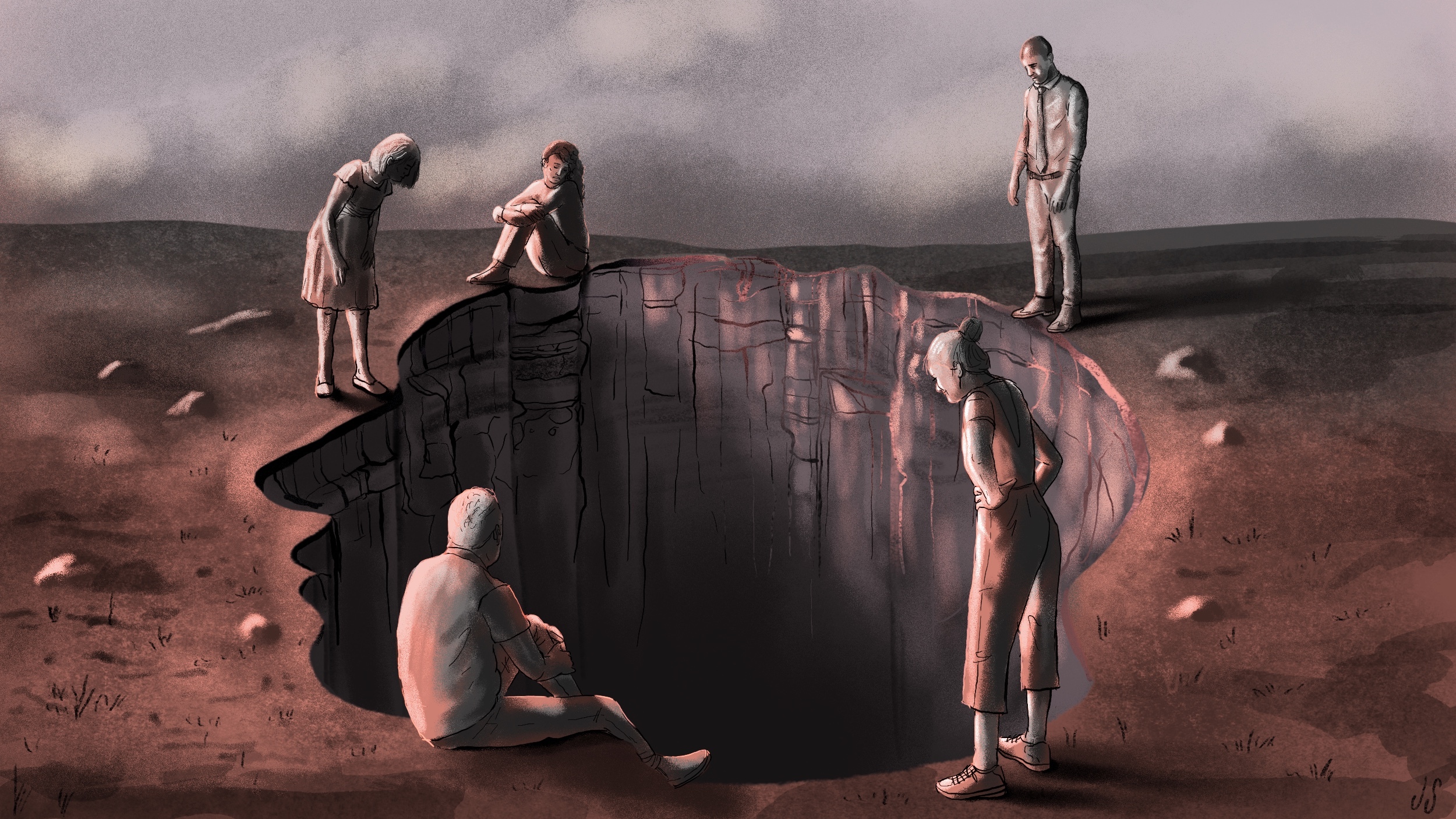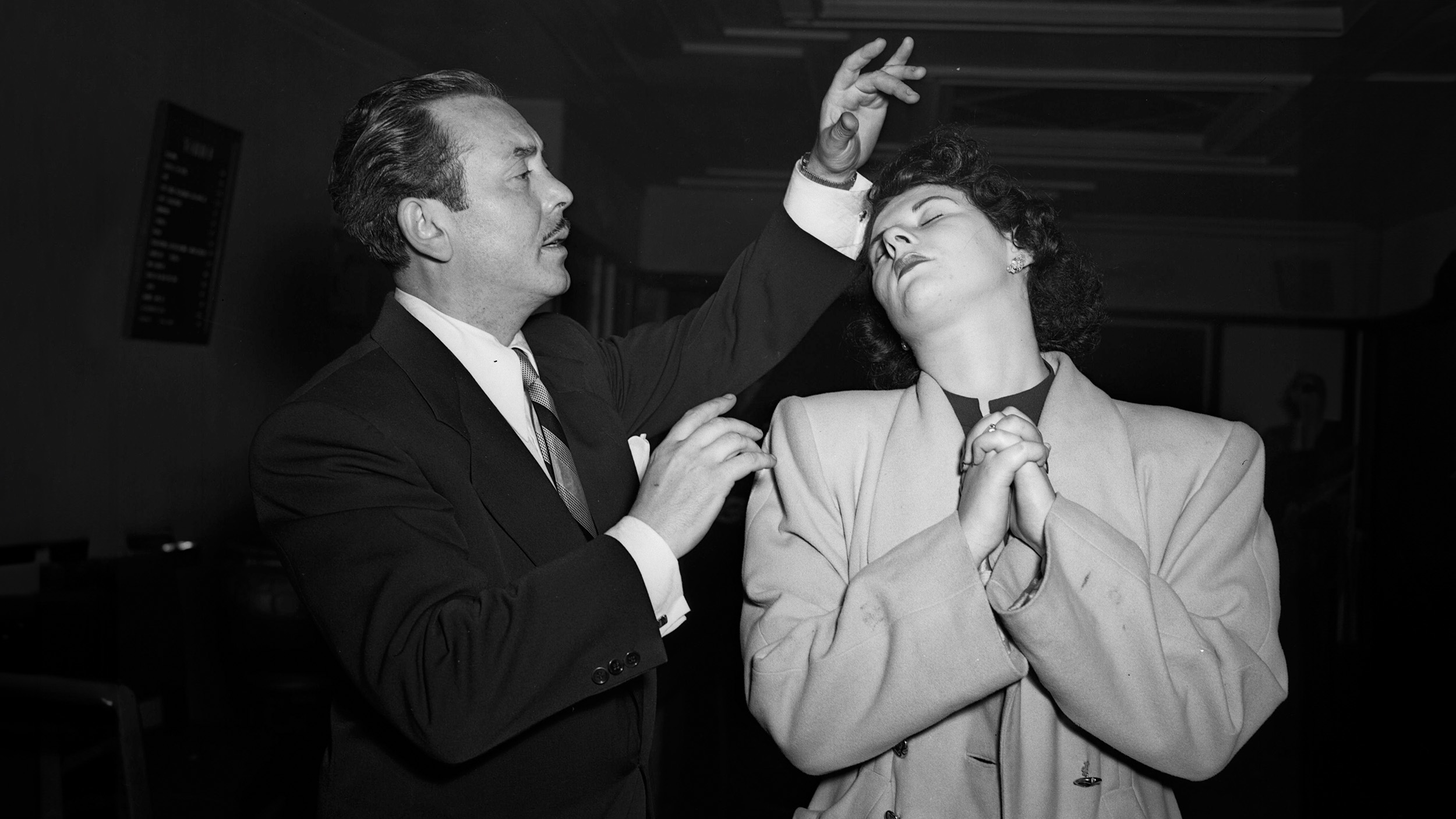Trigger warnings don’t help people cope with distressing material

Paula Bronstein/Getty Images
Imagine you’re a lecturer teaching a celebrated novel that features violent scenes – say, F Scott Fitzgerald’s The Great Gatsby (1925).
It transpires that one of your students has themselves been a victim of violence and now, thanks to your words, they are reliving their trauma. Could you, should you, have done more to protect this person?
Beginning in 2013, many students at universities in the United States began demanding that their lecturers do just that and provide ‘trigger warnings’ ahead of any potentially upsetting content. For instance, one student at Rutgers University in New Jersey highlighted the potential harm that The Great Gatsby might cause, with its ‘variety of scenes that reference gory, abusive and misogynistic violence’.
As you might have noticed, the use of trigger warnings has since spread beyond US universities to educational institutions around the world, and further: into theatres, festivals and even news stories. The warnings have become another battlefield in the culture wars, with many seeing them as threatening free speech and the latest sign of ‘political correctness’ gone mad.
Ideology aside, one could make a basic ethical case for giving warnings in the sense that it’s the considerate thing to do. If I invite a friend round to watch a movie that I know features disturbing scenes, it’s simply courteous and thoughtful to alert my friend in advance, in case she’d rather watch something more anodyne – and one could make the same case for a lecturer about to discuss distressing topics.
But as the debate over trigger warnings has raged, advocates for them have made strong psychological claims. First, they’ve argued that trigger warnings give people with a history of trauma a welcome chance to avoid the upsetting content. The literature scholar Mason Stokes of Skidmore College in New York has said that his teachings of Jim Grimsley’s novel Dream Boy (1995), which explores themes of child sexual abuse, caused one of his students – an incest survivor – to need in-patient psychiatric care. ‘I’ve warned students about the emotions this novel might trigger every time I’ve taught it since,’ he wrote in The Chronicle of Higher Education in 2014, the implication being that, in future, any of his students with a history of trauma will be able to avoid his upsetting lectures and therefore avoid needing acute psychiatric care.
Second, trigger-warning advocates say that such warnings give students and others the opportunity to brace themselves emotionally. In her New York Times op-ed ‘Why I Use Trigger Warnings’ (2015), the philosophy lecturer Kate Manne of Cornell University in New York argued that they ‘allow those who are sensitive to [potentially upsetting] subjects to prepare themselves for reading about them, and better manage their reactions’.
Whereas the ideological arguments for and against trigger warnings are difficult to settle, the specific psychological claims can be tested against the evidence. On the first claim, that trigger warnings enable survivors of trauma to avoid re-experiencing the negative associated emotions, critics argue that the avoidance of potentially upsetting material is actually a counterproductive approach because it offers no chance to learn to manage one’s emotional reactions. As a result, fears deepen and catastrophic thoughts go unchallenged.
Consider a meta-analysis of 39 studies in 2007 by Sam Houston State University in Texas that found a ‘clear, consistent association’ between using avoidance-based coping strategies (that is, staying away from upsetting stressors or avoiding thinking about them) and increased psychological distress. For a more concrete example, look at the findings from a study, published in 2011, of women who witnessed the Virginia Tech shooting of 2007 – those who tried to avoid thinking about what happened tended to experience more symptoms of depression and anxiety in the months that followed.
On the question of whether trigger warnings give people the chance to brace themselves emotionally, a spate of recent studies suggest that this simply isn’t how the mind works. In 2018, an investigation by Harvard University asked hundreds of volunteers on Amazon’s Mechanical Turk survey website to read graphic literary passages – such as the murder scene in Fyodor Dostoevsky’s Crime and Punishment (1866) – that either were or weren’t preceded by a trigger warning of distressing content ahead, and then rate their feelings. The warnings had little beneficial effect on the volunteers’ emotional reactions.
In the spring of 2019, a paper by the University of Waikato in New Zealand had nearly 1,400 participants across six studies watch graphic video footage, either preceded or not with warnings. This time, the warnings reduced the upsetting impact of the videos, but the size of this effect was ‘so small as to lack practical significance’ – and this was true regardless of whether the participants had a history of trauma or not.
Around the same time, a group at Flinders University in Australia looked at the effect of trigger warnings on people’s experience of ambiguous photos accompanied by different headlines – such as a picture of passengers boarding a plane either with an upsetting crash-related headline or an innocuous business-related headline. Trigger warnings increased participants’ negative feelings prior to the photo presentation, presumably as they anticipated what was to come. But, once again, the warnings didn’t make much difference to how volunteers responded emotionally to the photos.
It was a similar story in the summer of 2019 when researchers at McKendree University in Illinois gave volunteers warnings (or not) prior to watching educational videos about suicide or sexual assault. Again, the warnings had no meaningful effect on the emotional impact of the videos, including for volunteers who’d had their own personal experience of the topics. Post-video quizzes also showed the trigger warnings had no benefit for the participants’ learning.
And just this autumn, another relevant paper was published online. It wasn’t about trigger warnings per se, but investigated a cognitive principle central to the trigger-warnings debate. A team from the University of Würzburg in Germany wanted to see if advance warnings could allow people to better ignore distracting negative images while they were engaged in another task. Their consistent finding across three experiments was that people cannot use warnings to prepare or shield themselves from being distracted by an upsetting image.
All these new research findings don’t undermine the ethical or ideological case for trigger warnings, but they do cast serious doubt on the psychological arguments mustered by trigger-warning advocates. At the same time, the results provide some support for other psychological claims made by trigger-warning critics – such as the attorney Greg Lukianoff and the social psychologist Jonathan Haidt, authors of the bookThe Coddling of the American Mind (2018) – namely, that these warnings encourage a belief in the vulnerability of people with a history of trauma and, in fact, in people’s vulnerability in general.
For instance, the Harvard research found that the use of trigger warnings increased participants’ belief in the vulnerability of people with post-traumatic stress disorder – an unwelcome effect that the researchers described as a form of ‘soft stigma’ (also, for the subgroup of participants who started out the study believing in the power of words to harm, the trigger warnings actually increased the negative impact of the passages). Similarly, the McKendree research found that the only meaningful effect of trigger warnings was to increase people’s belief in the sensitivity of others to upsetting material and in the need for warnings.
It’s important not to overstate the scientific case against trigger warnings. Research into their effects is still in its infancy and, most notable, none of the recent studies has focused on their use among people with mental-health diagnoses. Yet already the results are surprisingly consistent in undermining the specific claim that trigger warnings allow people to marshal some kind of mental defence mechanism. There is also a solid evidence base that avoidance is a harmful coping strategy for people recovering from trauma or dealing with anxiety. The clear message from psychology then is that trigger warnings should come with their own warning – they won’t achieve much, except encourage maladaptive coping and the belief that folk are sensitive and need protecting.
This article was originally published at Aeon and has been republished under Creative Commons. Read the original article.





